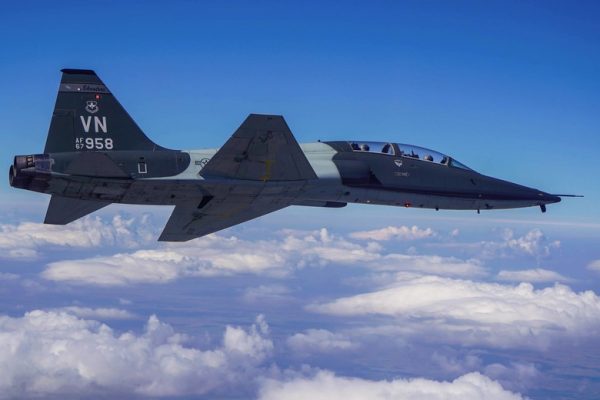-
By Capt. Bartholomew Dietrick, 71st Operations Support Squadron
-
VANCE AIR FORCE BASE, Okla. -- Since 1941, the roar of military aircraft in the sky has been a part of daily life in Enid, Oklahoma.
-
An increase in the number of student pilots training at Vance Air Force Base and seasonal weather patterns may make that roar seem even louder lately.
-
Vance AFB is proud to call Enid home. To date, almost 34,000 pilots have earned their wings here by training in the busy and complex airspace overhead.
-
The Air Force is experiencing a pilot shortage and Vance AFB, along with several other bases, is leading the charge to correct it.
-
In 2018, the 71st Flying Training Wing produced 324 pilots and plans to train at least 420 pilots in 2019, a staggering 30-percent increase over the previous year.
-
How is Vance planning to meet this increased requirement? One word… Innovation. The men and women of the 71st FTW are challenging every facet of the “business as usual” mindset. Leveraging technology, student pilots are building proficiency in simulators and virtual reality environments instead of adding to airspace congestion and noise.
-
This modern training method is streamlining pilot production and directly results in fewer flights per student, which allows us to train more students without significantly increasing the number of flights over the local community.
-
If the jets seem louder than normal, chances are the weather is to blame.
-
Wind direction determines which end of the runway aircraft use to take off. For safety reasons, the aviation-wide standard is for aircraft to depart into the wind.
-
In Enid, wind blows predominately from the south, which means aircraft will usually depart heading south and land from the north. At times, mostly in the fall and winter, pilots must change the direction of flight to accommodate periodic shifts in wind direction.
-
The three runways at Vance AFB are configured in a north-south direction. For reference, if the runways were extended out to the north, they would be located between Oakwood Road and Cleveland Street.
-
To keep the very busy airspace safe and efficient, air traffic control uses standardized departure procedures. On a northbound departure, the T-38, Vance’s loudest aircraft, will generally fly 13 miles north while climbing to 10,000 feet before heading to the western training areas.
-
During departure, aircraft engines are operating at their highest power setting, which means this phase of flight is the loudest.
-
During the fall and winter Enid has more overcast days. Cloud cover causes some sound waves to bend downward, increasing the perceived noise level on the ground. Clouds also cause aircraft to fly lower in order to maintain visual flight rules, bringing the noise source even closer.
-
These factors are a recipe for more noise over neighborhoods north of the base. The good news for local residents is any increase in sound they hear is likely only temporary and will change as soon as the wind does.
-
Team Vance sincerely appreciates the Enid community’s tremendous patience and support of our mission, our Airmen and our families.
-

-








